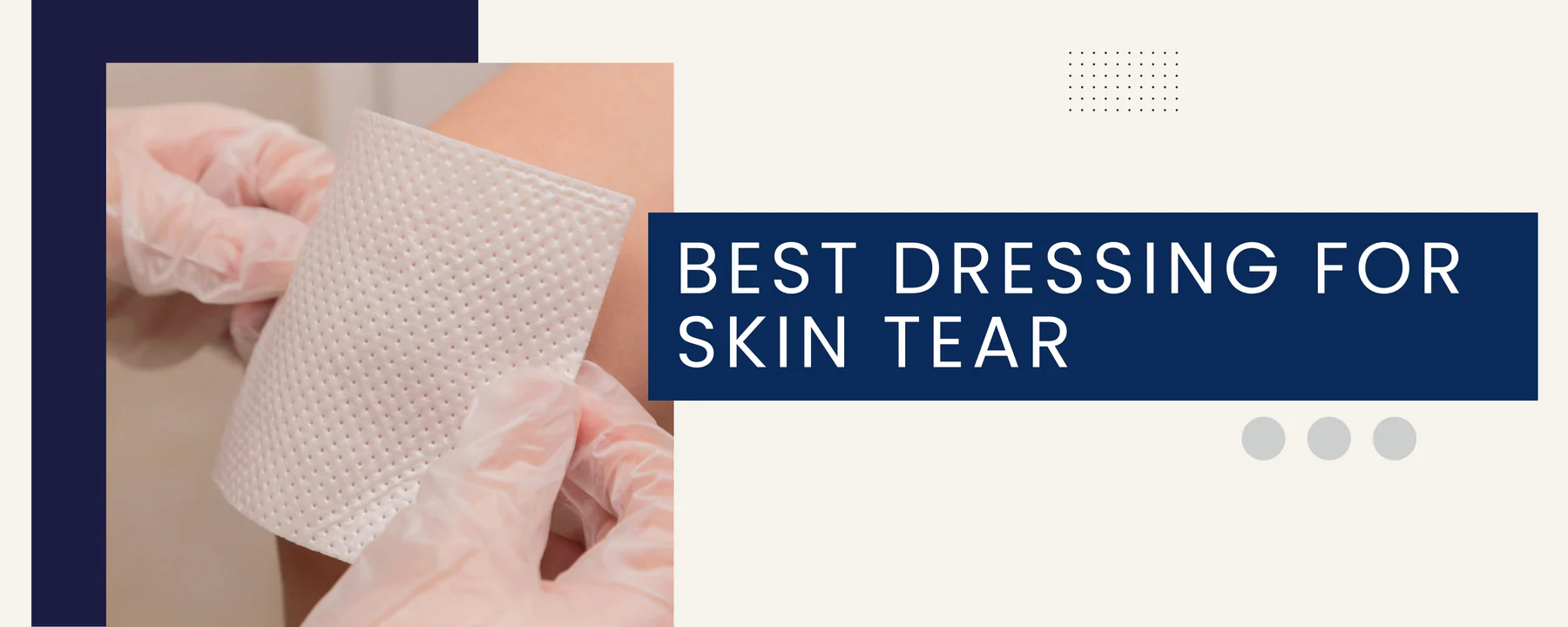Available via Chat

Best Dressing For Skin Tear
A skin tear is an injury caused by the separation or peeling back of the skin's layers. They may occur from bumping with objects, changing clothes, or using harsh detergents or air dryers on the skin. Usually, they affect the arms or legs. Thin, delicate skin is typically affected by the tears. Weak skin is more likely to tear easily than supple skin, which stretches to prevent breaking. Some people can damage their skin from just running into a bookcase or removing a bandage too quickly.
Skin tears are frequently preventable infections that cause unwarranted costs as well as patient suffering, thus prevention and effective care are crucial.
Treatment
- Handwashing is necessary.
- Control bleeding immediately.
- Use warm, clean water to gently clean the wound.
- Dry with a clean cloth, patting gently.
- Try to replace any skin flaps that are still connected by gently sliding the skin back over the injury. Keep the skin flap intact.
- Wrap the opening with a sterile, non-stick pad.
- Instead of using tapes or sticky bandages, use a stockinette.
Dressings for Skin Tears
Alcohol Preps
Don't use to actually treat the wound; use for preparation. Although they aren't a kind of wound dressing, alcohol preps are essential before treating a wound.
Gauze Bandage Roll
Made entirely of cotton, gauze bandage rolls can be used as an additional layer of protection or as a first layer dressing. This kind of dressing works well for difficult-to-dress wounds, such as those on the head or limbs. It can be loosely wrapped around the arm or leg to offer covering without clinging to the flesh.
Transparent Film Dressing
Skin tears are prevalent in people with extremely thin skin, and most of the time the tape is too rough to seal the edges. For some skin types, even butterfly closures are excessive. Transparent film dressings offer a means of allowing skin tears to heal, and they resemble plastic wrap (but aren't, so don't try to use plastic wrap). Film dressings have the extra benefit of being almost undetectable, which makes it simple to monitor the progress of healing. They keep the edges together by softly adhering to a larger surface area than a typical adhesive bandage or tape.
View Product View Product View Product
Foam Dressing
Works well with pressure injuries and is used for wounds with moderate to severe discharge. Because foam is the main component of foam dressings, they are incredibly breathable and absorbent. This kind of dressing keeps the wound at an appropriate moisture level while protecting and cushioning the area.
Self-Adherent Bandages
Self-adherent bandages are not the same as gauze since they lack the ability to absorb bodily fluids like blood. They just stay true to themselves. If the lesion is in an area where the bandage can be wrapped completely, such as an arm or leg, these bandages work well for those with sensitive skin. Similar to elastic bandages, these bandages may also be used for compression, and they have the added benefit of not requiring clips or safety pins to be secured.
Hydrogel Dressings
For dry or partly dry wounds; any wound containing dead tissue. Hydrogel dressings provide a wound with moisture, which aids in the breakdown of dead and dry tissue. Maintaining moisture in the wound aids in cell development.
Calcium Alginates
It is effective for treating arterial ulcers and is used on wounds with moderate to high discharge. This kind of treatment for wounds is extremely absorbent, retaining up to 20 times its own weight in moisture. It works particularly well in drawing moisture out of a wound's deep tunnelling regions.
Precautions
If at all possible, try to avoid using medical tape or sticky bandages. Fragile skin may break as a result of these adhesive bandages.
If you must treat a skin rip, cover the injury with non-adhesive gauze made of petroleum. Next, use medical tape to keep the wrap in place.

















